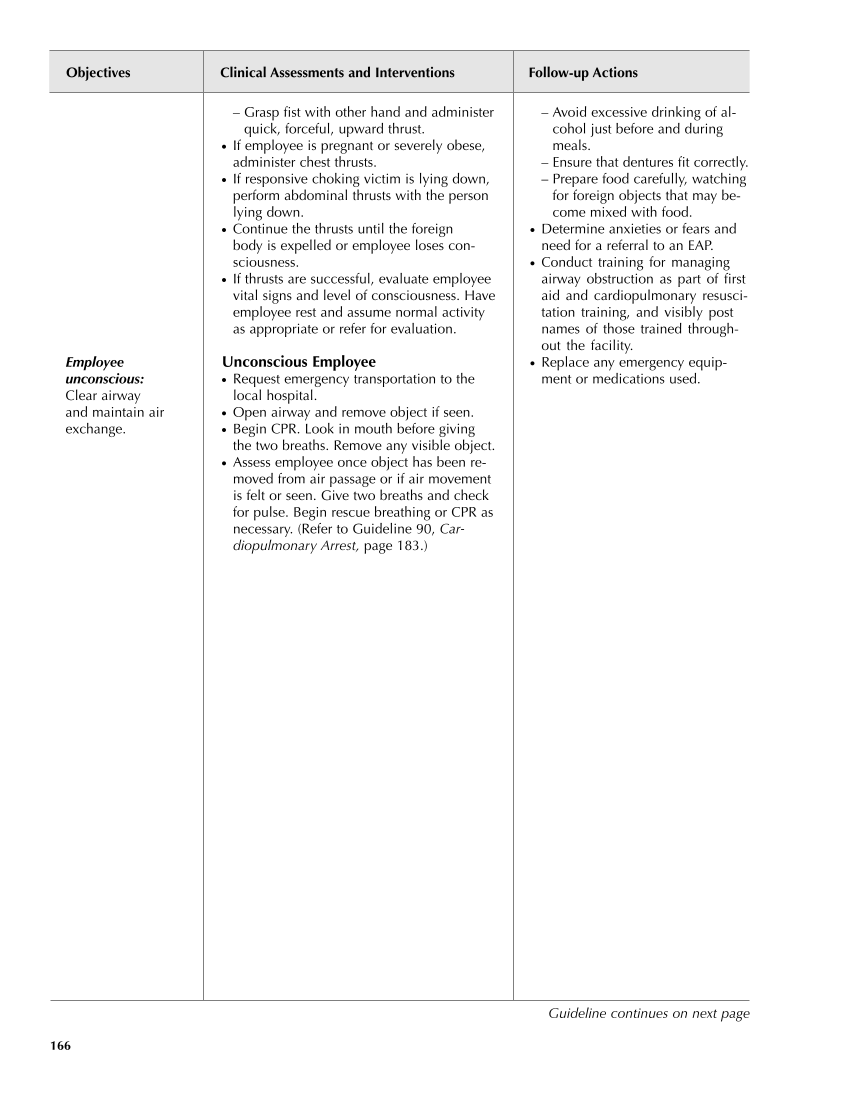Objectives Clinical Assessments and Interventions Follow-up Actions 166 – Avoid excessive drinking of al- cohol just before and during meals. – Ensure that dentures fit correctly. – Prepare food carefully, watching for foreign objects that may be- come mixed with food. ● Determine anxieties or fears and need for a referral to an EAP. ● Conduct training for managing airway obstruction as part of first aid and cardiopulmonary resusci- tation training, and visibly post names of those trained through- out the facility. ● Replace any emergency equip- ment or medications used. Employee unconscious: Clear airway and maintain air exchange. – Grasp fist with other hand and administer quick, forceful, upward thrust. ● If employee is pregnant or severely obese, administer chest thrusts. ● If responsive choking victim is lying down, perform abdominal thrusts with the person lying down. ● Continue the thrusts until the foreign body is expelled or employee loses con- sciousness. ● If thrusts are successful, evaluate employee vital signs and level of consciousness. Have employee rest and assume normal activity as appropriate or refer for evaluation. Unconscious Employee ● Request emergency transportation to the local hospital. ● Open airway and remove object if seen. ● Begin CPR. Look in mouth before giving the two breaths. Remove any visible object. ● Assess employee once object has been re- moved from air passage or if air movement is felt or seen. Give two breaths and check for pulse. Begin rescue breathing or CPR as necessary. (Refer to Guideline 90, Car- diopulmonary Arrest, page 183.) Guideline continues on next page
Purchased from OEM Press by (ge corporate access). (C) 2013 OEM Health Information, Inc. All rights reserved.












































































































































































































































































































































































































































